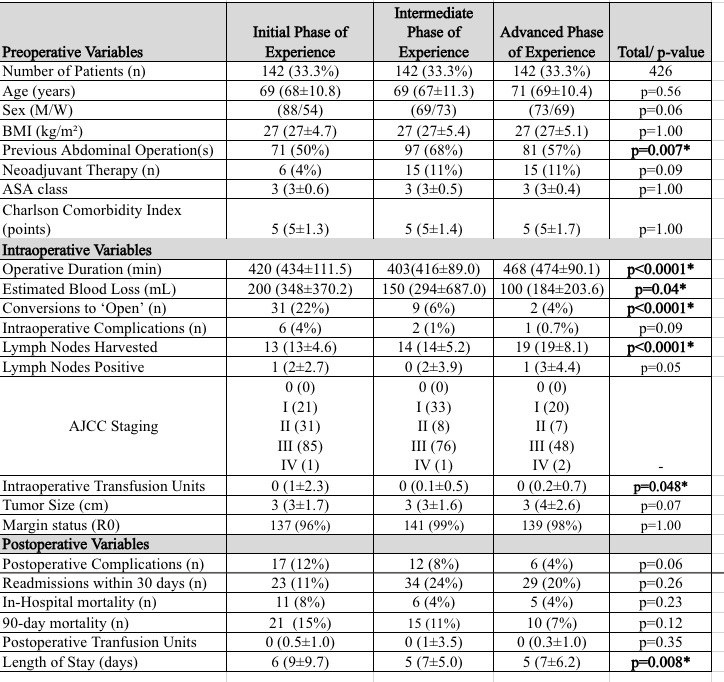Back to 2024 Abstracts
ANALYSIS OF LEARNING CURVE AFTER 426 ROBOTIC PANCREATICODUODENECTOMIES
Gowtham Lingamaneni
*, Sharona Ross, Iswanto Sucandy, Tara M. Pattilachan, Maria Christodoulou
Digestive Health Institute, AdventHealth Tampa, Tampa, FL
BACKGROUNDThe incorporation of robotic platforms in complex pancreatic operations, like robotic pancreaticoduodenectomy (PD), marks a pivotal advancement in surgical techniques. Robotic approaches are renowned for their enhanced safety, efficiency, and superior dissection capabilities over traditional methods. This transition underscores the significance of understanding the learning curve to achieve technical proficiency, essential for both surgeon comfort and patient safety. Although early learning curve for basic skill acquisition is well-documented, our study focuses on the prolonged trajectory necessary to attain mastery in robotic PD.
METHODSWith IRB approval, we have prospectively followed a collected database of 426 patients who underwent robotic PD at a single tertiary institution from 2013-2023. The learning curve for robotic PD was determined by employing Cumulative Sum Chart (CUSUM) analysis, with operative duration serving as a crucial variable for assessment. For illustrative purposes, data is presented as median(mean±SD). Statistical significance was accepted at p≤0.05.
RESULTS426 patients who underwent robotic PD comprised 54% men, aged 70(68±10.9) years, with BMI of 27(27±5.1)kg/m
2, with previous abdominal operations 249(58%), Neo-adjuvant therapy 36(8%), ASA Class 3(3, and Charlson Comorbidity Index 5(5. On CUSUM analysis, the learning curve for Robotic PD was 117 Cases (Figure 1). With increasing expertise, we undertook more operations for patients with previous abdominal operations (P=.007), EBL (P=.04), and conversions to ‘open' declined (P<.0001), lymph nodes harvested increased (p<.0001), intra-operative transfusion units improved (P=.048), and length of stay decreased (P=.008) (Table 1). Over time, as more complex cases were undertaken there was a significant increase in operative duration (P<.0001).
CONCLUSIONSThe long-term learning curve for achieving a consistent mastery level in robotic PD in our institution is 117 cases. This finding is significant as early studies on robotic PD often overlook the extended phase of mastering the procedure, despite evidence indicating continual improvement beyond each respective number of cases. Insights from this study are instrumental in guiding surgeons through their robotic experience with complex cases.
Keywords: Robotic Pancreaticoduodenectomy, robotic pancreaticoduodenectomy learning curve

CUSUM Learning Curve

Back to 2024 Abstracts

